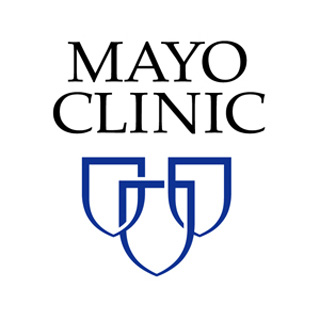Effects of Niacin on Intramyocellular Fatty Acid Trafficking in Upper Body Obesity and Type 2 Diabetes Mellitus
| Status: | Recruiting |
|---|---|
| Conditions: | Obesity Weight Loss, Diabetes, Diabetes |
| Therapuetic Areas: | Endocrinology |
| Healthy: | No |
| Age Range: | 18 - 55 |
| Updated: | 3/10/2019 |
| Start Date: | November 1, 2018 |
| End Date: | December 31, 2021 |
| Contact: | Sarah C Wolhart, BSN |
| Email: | wolhart.sarah@mayo.edu |
| Phone: | 507-255-6940 |
Muscle insulin resistance is a hallmark of upper body obesity (UBO) and Type 2 diabetes
(T2DM). It is unknown whether muscle free fatty acid (FFA) availability or intramyocellular
fatty acid trafficking is responsible for the abnormal response to insulin. Likewise, the
investigators do not understand to what extent the incorporation of FFA into ceramides or
diacylglycerols (DG) affect insulin signaling and muscle glucose uptake. The investigators
will measure muscle FFA storage into intramyocellular triglyceride, intramyocellular fatty
acid trafficking, activation of the insulin signaling pathway and glucose disposal rates
under both saline control (high overnight FFA) and after an overnight infusion of intravenous
niacin (lower/normal FFA) to provide the first integrated examination of the interaction
between FFA and muscle insulin action from the whole body to the cellular/molecular level. By
identifying which steps in the insulin signaling pathway are most affected, the investigators
will determine the site-specific effect of ceramides and/or DG on different degrees of
insulin resistance.
Hypothesis 1: Greater trafficking of plasma FFA into intramyocellular DG will impair proximal
insulin signaling and reduce muscle glucose uptake.
Hypothesis 2: Lowering FFA in UBO and T2DM by using an intravenous infusion of niacin will
alter trafficking of plasma FFA into intramyocellular ceramides in a way that will improve
insulin signaling and increase muscle glucose uptake.
Hypothesis 3: Lowering FFA in UBO and T2DM by using an intravenous infusion of niacin will
alter trafficking of plasma FFA into intramyocellular DG in a way that will improve insulin
signaling and increase muscle glucose uptake.
(T2DM). It is unknown whether muscle free fatty acid (FFA) availability or intramyocellular
fatty acid trafficking is responsible for the abnormal response to insulin. Likewise, the
investigators do not understand to what extent the incorporation of FFA into ceramides or
diacylglycerols (DG) affect insulin signaling and muscle glucose uptake. The investigators
will measure muscle FFA storage into intramyocellular triglyceride, intramyocellular fatty
acid trafficking, activation of the insulin signaling pathway and glucose disposal rates
under both saline control (high overnight FFA) and after an overnight infusion of intravenous
niacin (lower/normal FFA) to provide the first integrated examination of the interaction
between FFA and muscle insulin action from the whole body to the cellular/molecular level. By
identifying which steps in the insulin signaling pathway are most affected, the investigators
will determine the site-specific effect of ceramides and/or DG on different degrees of
insulin resistance.
Hypothesis 1: Greater trafficking of plasma FFA into intramyocellular DG will impair proximal
insulin signaling and reduce muscle glucose uptake.
Hypothesis 2: Lowering FFA in UBO and T2DM by using an intravenous infusion of niacin will
alter trafficking of plasma FFA into intramyocellular ceramides in a way that will improve
insulin signaling and increase muscle glucose uptake.
Hypothesis 3: Lowering FFA in UBO and T2DM by using an intravenous infusion of niacin will
alter trafficking of plasma FFA into intramyocellular DG in a way that will improve insulin
signaling and increase muscle glucose uptake.
Inclusion criteria:
- Women and Men (Women premenopausal)
- BMI 29-37
- Weight stable
- Not pregnant/nursing
Exclusion criteria:
- Ischemic heart disease
- Atherosclerotic valvular disease
- Smokers (>20 cigarettes per week)
- Bilateral oophorectomy
- Concomitant use of medications that can alter serum lipid profile:
- High dose fish oil (>3g per day),
- STATINS (if yes hold for 6 weeks and receive PCP's approval),
- Niacin
- Fibrates
- thiazolidinediones
- Beta-blockers
- Atypical antipsychotics
- Lidocaine or Niacin/Niaspan allergy
- Subjects with 1.5 times upper limit of normal of serum creatinine, Alkaline
phosphatase, Aspartate aminotransferase (AST), Alanine aminotransferase (ALT) unless
participant has fatty liver disease, Total bilirubin (unless the patient has
documented Gilbert's syndrome)
We found this trial at
1
site
200 First Street SW
Rochester, Minnesota 55905
Rochester, Minnesota 55905
507-284-2511

Principal Investigator: Michael D jensen, MD
Phone: 507-255-6062
Mayo Clinic Rochester Mayo Clinic is a nonprofit worldwide leader in medical care, research and...
Click here to add this to my saved trials